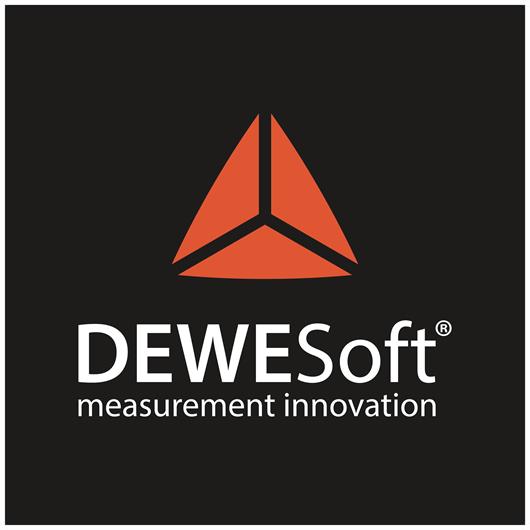 Add My Company
Add My Company
Sign In

Written by Grant Maloy Smith, the data acquisition expert
In this article we will discuss signal conditioners and what they do in Data Acquisition (DAQ) systems, with enough detail so that you will:
See how signal conditioners work
Learn how they are used within DAQ systems
Understand their importance in the signal chain
Are you ready to get started? Let's go!
What is Signal Conditioning?
Analog signals need to be correctly "prepared" before they can be converted into digital form for further processing. Signal conditioning is an electronic circuit that manipulates a signal in a way that prepares it for the next stage of processing. Many data acquisition applications involve environmental or mechanical measurement from sensors, such as temperature and vibration. These sensors require signal conditioning before a data acquisition device can effectively and accurately measure the signal.
For example, thermocouple signals have very small voltage levels that must be amplified before they can be digitized. Other sensors, such as resistance temperature detectors (RTDs), accelerometers, and strain gauges require excitation to operate. All of these preparation technologies are forms of signal conditioning.
Signal conditioning is one of the fundamental building blocks of modern data acquisition (aka DAS or DAQ system). The basic purpose of a data acquisition system is to make physical measurements. They are comprised of the following basic components:
Sensors (see What Is A Sensor guide)
Signal Conditioning (this article)
Analog-to-Digital Converter (ADC) (see What Is An A/D Converter guide),
And some sort of computer with DAQ software for signal logging and analysis.
Learn more about data acquisition:
What is a data acquisition system - DAQ or DAS
History of data acquisition - from strip chart recorders to modern digital DAQ
What Do Signal Conditioners Do?
Data acquisition systems need to connect to a wide variety of sensors and signals in order to do their job. Signal conditioners take the analog signal from the sensor, manipulate it, and send it to the ADC (analog-to-digital converter) subsystem to be digitized for further processing (usually by computer software).
As the name implies, they are in the business of conditioning signals so that they can be converted into the digital domain by the A/D subsystem, and then displayed, stored, and analyzed.
After all, you cannot directly connect 500V to one of the inputs of an A/D card - and thermocouples, RTDs, LVDTs, and other sensors require conditioning to operate and to provide a normalized voltage output that can be input into the A/D card.
Signal Conditioners Types
In the world of electric sensors, we need different types of signal conditioning circuits in order to properly condition signals coming out from those sensors. Today common types of signal conditioners are:
Voltage and high-voltage signal conditioners
Current signal conditioners
IEPE signal conditioners (or ICP/piezoelectric signal conditioners)
Charge signal conditioners
Strain gauge signal conditioners
Load cell signal conditioners
Thermocouple signal conditioners
RTD signal conditioners
Thermistor signal conditioners
LVDT signal conditioners
AC signal conditioning
DC signal conditioning
Digital signal conditioners
For more details about each type also look at the table under section common types of signal conditioners.
Top Requirements Of Signal Conditioners
Today signal conditioners include some of the required elements that make them useful for modern data acquisition systems. These elements are:
Electrical isolation
The right connectors for sensor connections
Measurement range selection
Signal filtering (e.g. anti-aliasing filtering)
Conformance with sensor requirements.
We will now look at each of these elements of signal conditioners.
Check out Dewesoft's data acquisition systems with high-end signal conditioning
Dewesoft DAQ Systems
Electrical or. Galvanic Isolation
The best signal conditioners provide electrical isolation between the inputs and their outputs. Isolation reduces noise, prevents ground loops in the measuring chain, and ensures accurate measurements.
Sometimes also referred to as galvanic isolation, electrical isolation is the separation of a circuit from other sources of electrical potential. This is especially important with measuring systems because most signals exist at relatively low levels, and external electrical potentials can influence the signal greatly, resulting in wrong readings. Interfering potentials can be both AC and DC in nature.
For example, when a sensor is placed directly on an article under test, (e.g. a power supply) which has potential above ground (i.e., not at 0V), this can impose a DC offset on the signal of hundreds of volts. Electrical interference or noise can also take the form of AC signals created by other electrical components in the signal path or in the environment around the test. For example, fluorescent lights in the room can radiate 400 Hz which can be picked up by very sensitive sensors.
This is why the best data acquisition systems have isolated inputs - to preserve the integrity of the signal chain and ensure that what the sensor outputs is truly what has been read. There are several kinds of isolation techniques employed today.
It is important that isolation is in place not just from channel to ground, but also from channel to channel. Excitation lines should also be isolated where necessary. A comprehensive isolation system prevents damage to the systems from excessive voltage and avoids ground loops and wrong measurements.
As one example, signal conditioners of Dewesoft’s SIRIUS DAQ systems provide isolation of 1000V (the HV high voltage module is additionally rated CAT II 1000V).
Learn more about DAQ isolation:
The Importance of Isolation in Data Acquisition Systems guide
The Right Sensor Connections
The best signal conditioners are fully adapted to the sensors that they are intended to be used with. At the most basic level, this includes the use of the appropriate connector(s) for these sensors.
For more information on What Is Signal Conditioning or Signal Conditioner? talk to Dewesoft UK Ltd
Enquire Now
More News
List your company on FindTheNeedle.

